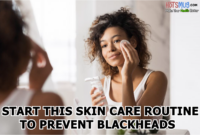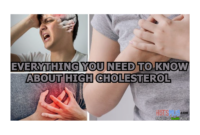To be honest, there is a lot of false information out there when it comes to “healthy” foods. We’re constantly influenced by social media and advertisements that don’t always provide accurate information and, therefore, change our perception of food. Product labels provide some of the most misleading information because there is room for interpretation of what “all natural” and “100% whole wheat” actually mean.
Unfortunately, some of our favorite meals, snacks, and drinks – that we think are healthy – are in fact unhealthy. I hate to burst your bubble, but I’ve got some bad news that you’re probably not going to want to hear, but I’m just looking out for you and your health. To be fair, the majority of the foods on this list can be homemade and, therefore, healthier because you know the exact ingredients.
10 Foods That Seem Healthy But Aren’t
1. Sweetened Soy and Nut Milk
We all know that dairy and I don’t get along hence why I live a dairy-free lifestyle and all NS recipes are — which also allows flexibility for you if you do enjoy dairy, just add it in.
Many store-bought nut and soy milk are often high in added sugars and have carrageenan, a food additive from red seaweed used to emulsify or thicken the milk.
While it might sound harmless, carrageenan has been shown to increase the risk of stomach ulcers and glucose intolerance. So I recommend many of clients get the unsweetened, carrageenan-free nut milk instead.
2. Trail Mix
I know what you’re thinking — nuts can’t be all that bad for you! But it’s not the nuts themselves that are unhealthy in trail mixes. The flavorings that they’re coated with raise their sugar and sodium content to sky-high levels. Otherwise, trail mix is an amazing healthy snack!
Plus, many trail mixes contain omega-6-rich polyunsaturated oils which have been heated at high temperatures resulting in oxidation of the fat, like sunflower, safflower and grapeseed oil. Some store-bought trail mixes also have candy-coated chocolates, which, depending on how many are included, may also cause a blood sugar spike and dip.
To get the true benefit of a high-protein, high-fiber snack, try building your own! It’s more affordable, and you can pick and choose ingredients you enjoy such as almonds, hazelnuts, pumpkin seeds, goji berries, unsweetened coconut flakes, Brazil nuts, etc.
3. Veggie Spreads and Dips
Just because that chip dip has hints of green, it doesn’t mean you can bank on it for your veggie count of the day. While spinach and artichoke dips and cucumber spreads seem like they’re your best option on the cocktail platter, they may be rich in saturated fats from sour cream, cream cheese, mayo, and other cheeses without additional nutrients.
As a healthier alternative, try hummus, other bean-based dips, basil pesto, cashew kimchi dip, sweet onion dip, and cashew cheese. I like to add minced garlic and nutritional yeast to get that savory, Parmesan-like flavor in my cashew cheese
4. Brown bread
Check the ingredient list on a packet of brown bread, it is most likely that you will find refined wheat flour as the first item, followed by wheat flour. In any product, the first ingredient listed on the label would be present in a larger quantity. Hence we can deduce that brown bread has refined flour (maida) as its major ingredient, with key nutrients often stripped off from the bread. If it isn’t 100% whole wheat, this bread would contain enriched flour, which gives you a sugar high and crashes without any nutritional value. You can swap it for fibre-rich bread that is 100% whole wheat. Other bread like multigrain and sprouted are good options too, as long as you find this as the majority ingredient listed on the package.
5. Peanut Butter
Key health benefit of peanuts is that they are full of monounsaturated fats, aka good fats. The commercially obtainable peanut butter contains hydrogenated oil. Food manufacturers use the method of hydrogenation to save cost and improve the shelf life of the product. Hydrogenation is the process in which a liquid unsaturated fat is turned into a solid fat/trans-fat by adding hydrogen. These trans-fats increase the risk of heart attacks, stroke and type 2 diabetes. Trans-fat also has an unhealthy effect on your cholesterol levels. Apart from hydrogenated oil, commercially available peanut butter also contains processed sugar and salt. Enough reasons to ditch the commercial ones and make all-natural peanut butter at home.
6.Smoothies and protein shakes
7. Frozen yogurt
8. Dried fruits
Dried fruits are packed with fiber, vitamins and other essential nutrients. However, dried fruits are sweeter than fresh fruits and can be easily overeaten. High in sugar and calories, dried fruits are less preferred as compared to fresh fruits.
9. Bagels
Most bagels contain three or four servings of carbohydrates. And if you add cream cheese, it can have more than 400 calories and contain a whopping 25% of the daily allowance of sodium. If you compare a plain bagel and a simple glazed donut, they have about the same number of calories. (That’s 215 and 229 respectively.) Donuts are hardly a health food and certainly contain more sugar than bagels. But bagels sometimes fly under the radar as a good, regular breakfast option.
10. Soup and salad
Soup and salad can make a healthy meal. But the devil is in the details: Cream-based soups can be quite high in fat. And when it comes to a salad, it can stop being a low-calorie meal once you add croutons, cured meats and high-fat dressing. The other, less obvious issue with soups at restaurants is that they’re notoriously high in sodium. Too much salt doesn’t just raise blood pressure. It also increases your risk of stroke, heart failure, osteoporosis, stomach cancer and kidney disease.
Bonus Point
INGREDIENTS/MARKETING TO AVOID WHEN EATING HEALTHY
One of the top marketing ploys that make you think you are making a nutritional choice when you are not, is found in the fake healthy food category. It’s easy to be led astray. After all, we’re all looking to eat better and live a healthy lifestyle. Here are a few tricksters:
- Flavorings are often chemicals combined to produce “flavors”, they are not actual flavoring of food. For instance, artificial flavors are chemical mixtures made with synthetic ingredients.
- 99% fat-free typically means the food item is now very high in sugar.
- Trans fat-free food often contains hydrogenated fat, so be aware of the replacement.
- Cholesterol-free is often a marketing ploy because chances are, the food does not contain cholesterol anyway.
- No added sugar may tempt you into a purchase, but most likely, the item is already high in sugar. Take fruit juice, for example. Why drink a cup of pure sugar when it is much better for you to consume a lower amount of sugar and the bonus of added fiber by eating a piece of fruit.




